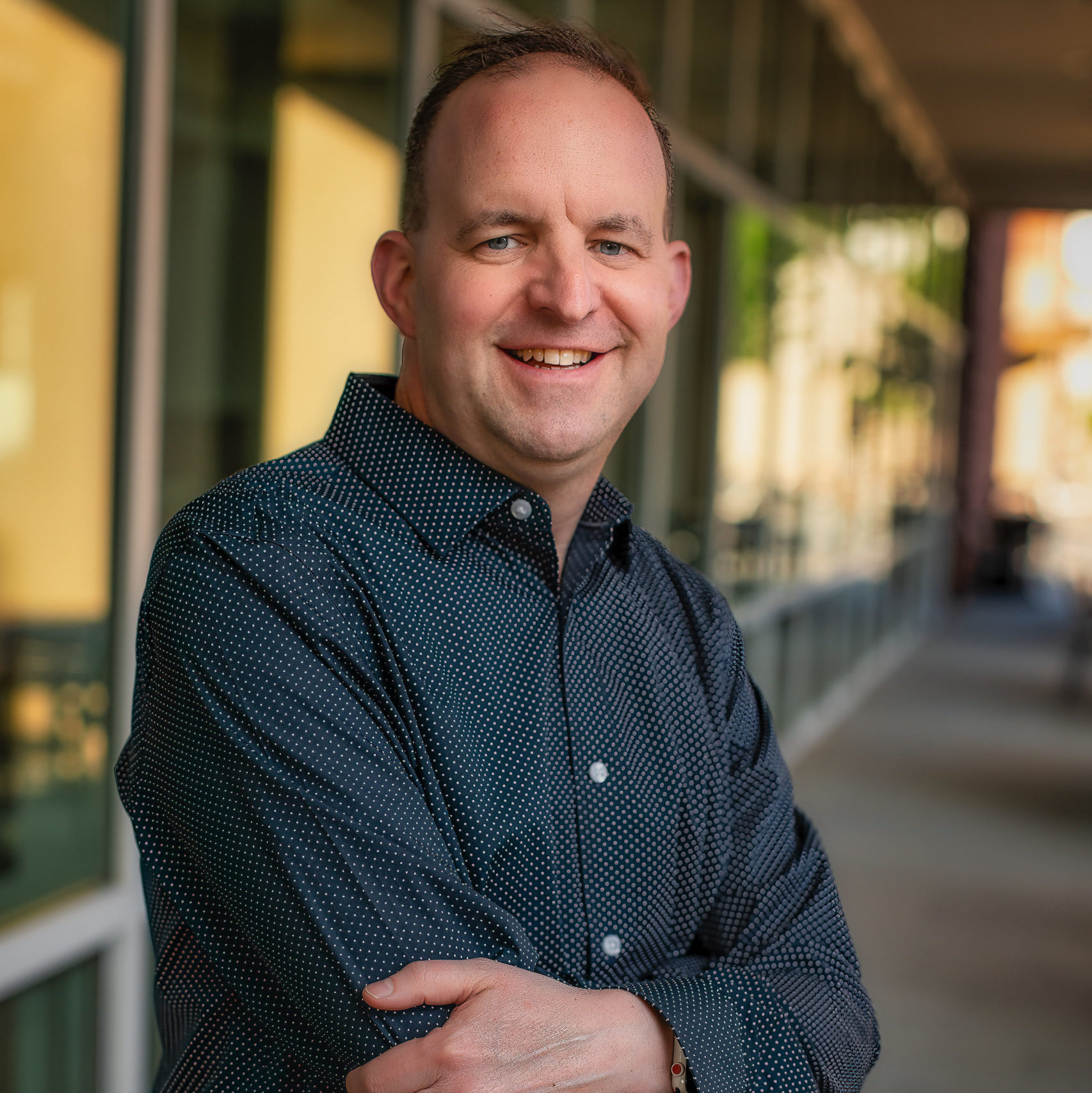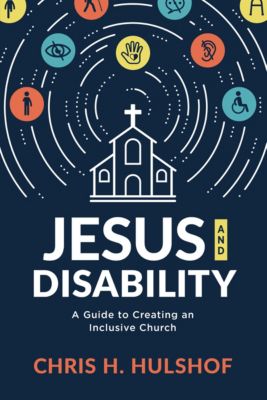
At the heart of Jesus’ ministry to disabled people, we see the value a human being has over questions, outcomes, and paradigms.
By Chris Hulshof
In the early 1990s, auto stereograms were all the rage. If that doesn’t sound familiar, you probably know these pop culture souvenirs by their more common name—magic eye photos. For some, these photos were an adventure in frustration. All they could see was the 2D image of the repeating patterns and not the 3D image hidden in the picture. The trick to seeing the 3D image was to alter your perception. If you were to stare at the tip of your nose and then slowly shift your focus to the picture you would be able to see beyond the series of repeating 2D images.
In some sense, when we adjust our focus on Jesus’ healing miracles, we get a better sense of what can be seen. More to the point, when we move our focus off our questions, outcomes, and paradigms and onto the person and work of Jesus Christ, we get a better view of what disability ministry should look like.
When we move our focus off our questions, outcomes, and paradigms and onto the person and work of Jesus Christ, we get a better view of what disability ministry should look like. — @US_EH Click To TweetSee beyond the questions
John 9 opens with Jesus’ disciples posing an interesting question. They see a man who is blind and ask Jesus, “Rabbi, who sinned, this man or his parents, that he was born blind?” (John 9:2, CSB). Judging by their question, we know the disciples must have been familiar enough with this man to know he was born blind. This disabled individual wasn’t a stranger. They had some familiarity with his story.
Yet, even with this familiarity, they had a lingering question they wanted Jesus to answer. It’s a theological question related to disability and sin. The disciples assumed there was a one-to-one connection between disability and sin. So, their question wasn’t one of reason but responsibility. “Jesus, who’s at fault here? Do we blame his parents, or do we blame him?”
Jesus isn’t interested in their question. In fact, His answer shows just how off their question really is. Eugene Peterson captures Jesus’ response brilliantly in his paraphrase: “You’re asking the wrong question. You’re looking for someone to blame. There is no such cause-effect here. Look instead for what God can do” (John 9:3, MSG). It seems Jesus is intimating that there’s something to do in this situation and the disciples should have chosen that route.
There were at least two options in front of the disciples. They could have spoken to Jesus and requested that Judas, as the treasurer, give the blind beggar some money. In doing so, they would be giving alms to the poor, and the blind beggar would be getting some financial support. A win-win for everyone. They could have asked Jesus to heal the disabled man. They had followed Jesus long enough to know He has the power to heal. Sadly, the disciples were more interested in questions than actions. They didn’t see a human being with a need. Instead, they saw a theological question they wanted Jesus to answer.
Good theology is practical theology. — @US_EH Click To TweetI believe it’s easy for ministries to fall into the same trap the disciples found themselves in. Rather than looking for what God can do, our response to disability gets hampered by questions (theological or otherwise). We fail to see the available options for assistance, fellowship, and side-by-side ministry because our questions hinder our view. Good theology is practical theology. If our theology of disability ministry doesn’t go any further than discussing questions and issues, it’s simply an exercise in information rather than effective and practical church ministry.
See beyond ministry outcomes
Jesus’ meeting with the lame man at the pool of Bethesda (John 5:1-16) is a disappointing encounter. It has all the earmarks of a spectacular and hopeful narrative. A lame man, a willing savior, and a curious pool of healing. But, if you come to this story hoping for a happy ending, you’ll be disappointed. When Jesus meets the disabled man, He offers him healing. The man responds to Jesus with a series of excuses (interestingly, every statement the man makes in this story is an excuse). But his excuses and lack of faith don’t prevent Jesus from healing him.
Jesus heals the man and slips away. The healed man makes no effort or attempt to find his healer. There’s no “Thank you” or expression of gratitude found here. In fact, it’s Jesus who goes looking for this man again—this time in the temple. This second meeting ends worse than the first. Given the chance to make a profession of faith in Jesus, the man doesn’t do it. Instead, he turns on Jesus and reports Him to the religious leaders. John notes the actions of this man led to the beginning of the persecution of Jesus by the religious leaders (John 5:16).
A church that gives an ear to our data-driven society, where numeric outcomes often determine a course of action, can find itself evaluating ministry programs by outcomes rather than individuals. This will have disastrous consequences for disability ministries. In their book and curriculum, Beyond Suffering, Joni and Friends highlight seven fears, myths, and misunderstandings churches may have when they consider implementing a disability ministry. Two of these myths are worth considering in light of John 5. These two myths, fears, and misunderstandings are: “People with disabilities will be a burden and cannot contribute to the church” and “People with disabilities can’t learn.”
In other words, these two myths underscore the fear that the ministry investment will not return a significant result. Much can be said about the tragic errors and horrible assumptions found in these two myths. However, they underline something the John 5 narrative cautions against. If we base ministry on results and outcomes, we’ve lost our focus on compassion and concern for others.
If we base ministry on results and outcomes, we’ve lost our focus on compassion and concern for others. — @US_EH Click To TweetIf Jesus based His ministry around outcomes, the lame man at the pool of Bethesda would never have been healed. Jesus, knowing how this man would respond and the results of his response, still involved Himself in this man’s life. If ministry is about bottom lines, then Jesus’ example here is terrible. This healing goes in the minus column, not the plus column. Knowing this encounter would lead to persecution and not a new follower or even a profession of faith, Jesus healed. When we evaluate ministry solely based on outcomes, contributions, and ministry potential we’ll always lose sight of the imago Dei in an individual regardless of their abilities or disabilities.
See beyond the typical ministry paradigm
The three synoptic gospels recount two stories told as one. Matthew, Mark, and Luke tell of a day when Jesus healed two women (Mark 5:21–43, Matthew 9:18–26, and Luke 8:40–56). They leave the healing of Jairus’ daughter and the woman with the issue of blood intact so that we must understand them together before we can look at them separately.
Jesus is on the way to Jairus’ house to heal his almost dead daughter. The traveling party comes to a halt when a woman with an incurable illness gets the healing she desired. However, her plan for a “heal and run” doesn’t work out, and she ends up in a conversation with Jesus. Unfortunately for Jairus, while all this is going on, he gets the news he was desperately hoping to avoid. His daughter had died. When Jesus overhears this news, He says to Jairus, “‘Don’t be afraid. Only believe’” (Mark 5:36, CSB).
In a sense, what Jesus is doing is getting Jairus to review all that just transpired and consider that what He did for this diseased and disabled woman He could also do for Jairus’ dead daughter. Jesus is using the faith of the once-bleeding woman to influence the faith of Jairus.
Far too often, individuals with disabilities are overlooked when it comes to serving and leading in the local church. — @US_EH Click To TweetOur consumable-media-driven culture has created a term that now has resounding significance: “influencer.” From a ministry perspective, who are the “influencers” in your church? Typically, we might think of church staff, leaders, or volunteers. Are any of those “influencers” disabled?
For many who are disabled, their involvement in church amounts to little more than showing up, sitting through the service, and then leaving with the rest of the congregation. They are never given the opportunity to serve alongside others in the church or even lead in ministries where God has clearly gifted and equipped them. Far too often, individuals with disabilities are overlooked when it comes to serving and leading in the local church.
When we look at Jesus’ ministry to disabled people, we see at the heart of it the value a human being has over questions, outcomes, and paradigms. A church ministry predominantly focusing on these three things is a ministry that has shifted its focus from Jesus to something else.

Chris Hulshof
Chris is an associate professor and department chair for Liberty University’s School of Divinity where he teaches courses in Old Testament survey, inductive Bible study, and theology of suffering and disability.
Chris Hulshof recently released his book Jesus and Disability.








